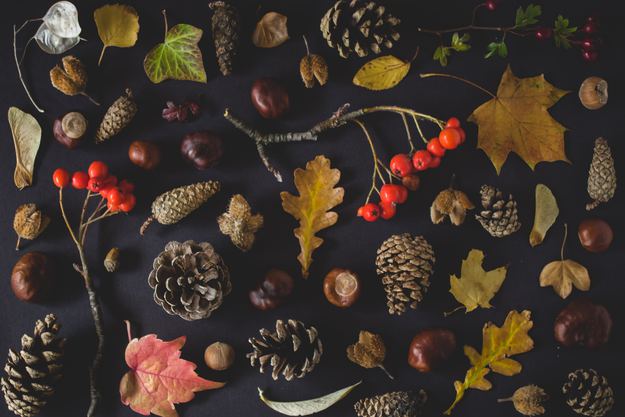The Pilgrims And The First Thanksgiving
Nov 25th, 2023 | By Dr. Jim Eckman | Category: Featured Issues, Politics & Current EventsThe mission of Issues in Perspective is to provide thoughtful, historical and biblically-centered perspectives on current ethical and cultural issues.

The story of the Pilgrims is the story of the beginning of the holiday we know as Thanksgiving. But sometimes in America, we equate the Pilgrims with the Puritans, and assume they were identical groups. They were not. Pilgrims were also known as “Separatists,” meaning they chose to separate from the established Church of England, the Anglican Church. The Puritans remained in the Anglican Church and chose to attempt to “purify” it from within—hence the name “Puritan.” In 1608, a group of Separatists, who would become the Pilgrims, fled England and settled in Holland. They desired freedom of worship there. Strongly influenced by the Calvinism of Geneva, Pilgrims believed that the Church of England was too much like Catholicism and cultivated half-hearted believers at best. They rejected the hierarchy of Anglicanism and desired to have a gathered church of the “elect,” who joined together in a covenant. For these Separatists, the local congregational church would only be composed of the “chosen ones” (i.e., the elect) of God, not the halfhearted or lukewarm Christians of Anglicanism. The Bible was their guidebook for everything in life and they believed the Anglican Church was on the wrong path. They thereby refused to worship in the Established Church of England and believed that all true believers needed to separate from Anglicanism. Hence, they fled to Holland.
After ten years in Holland, they began to fear losing their identity as Englishmen, so they began to ponder re-locating to the New World. Thus in July 1620, they sailed for England on the Speedwell, and then from England 101 Separatists sailed on the Mayflower for the New World. As they approached America, a majority of the men signed the Mayflower Compact, based on the Separatists’ Church covenant. They agreed to pass necessary and just laws based on their religious convictions. It was in many ways an extraordinary document, for they pledged to govern themselves, making it an important document in the history of political and religious liberty. They landed farther north than they intended and settled in Cape Cod, New England. They named their settlement, “Plymouth,” in honor of the English city from which they had sailed. Because they were strangers in a new land, they called themselves “Pilgrims.”
We are all familiar with the story of the first Thanksgiving hosted by the Pilgrims. But God’s grace to the Pilgrims was extended through a Native-American named Squanto (his actual name was Tisquantum). They called Squanto “a special instrument sent of God for our good, beyond our expectation.” What did the Pilgrims mean? Squanto had been captured in 1605 and made a slave. He was taken to England, where he spent nine years and where he learned English. He was of the Pawtuxet Indian tribe of New England and was able to return to them on Captain John Smith’s ship in 1614. But he was tricked by Captain Thomas Hunt, who lured him and a few others to his ship. Squanto was enslaved again and taken to Spain. By God’s providence, Squanto became a Christian in Spain. Making his way again to England, Squanto got passage on a ship bound for America. When he arrived at Cape Cod, he learned that his entire tribe had been wiped out by smallpox.
The Pilgrim’s first winter was filled with hardship and sickness; it was harsh and it was dreadful. In March of 1621, an Indian named Samoset walked into Plymouth. He had learned English from English fisherman in the area of Maine. Samoset informed them that they had settled in an area developed by the Pawtuxet tribe, which had been wiped out by smallpox. Samoset then introduced them to Squanto on 22 March 1621. Squanto informed the Pilgrim leaders that the great chief of the Wampanoag tribe, Massasoit, who was also the leader of a confederation of Indian tribes, would be visiting their area that day. Squanto’s connection with Massasoit produced a peace treaty that would last for decades.
In addition, Squanto showed the Pilgrims how to fertilize and protect the corn they had planted, how to catch fish from the streams and how to harvest their crops. If Squanto had not arrived, it is doubtful the Pilgrims would have survived. Squanto is one of the key reasons why the Pilgrims would celebrate Thanksgiving the following fall. God’s amazing providence was evident in the life of Squanto, a powerful example of the grace of God. Squanto is an important and usually forgotten part of the Thanksgiving story.
After 1630 Thanksgiving was celebrated annually and became common in the New England colonies. In the 18th and 19th centuries, US presidents proclaimed national thanksgiving days: In 1789 George Washington named Thanksgiving, 26 November, as a day of thanks for the ratification of the Constitution, and another in 1795 for God’s general blessings on the nation. In 1815 James Madison asked the nation to give thanks for peace after the War of 1812. In 1863 Abraham Lincoln began the practice of a national proclamation, setting the fourth Thursday in November as Thanksgiving Day. In 1941 a resolution by Congress officially established the fourth Thursday in November as Thanksgiving. Each president has issued a proclamation to that end each year.
May we remember God’s care, providence and grace this Thanksgiving weekend—and be certain to thank Him for His care, providence and grace in our lives! Happy Thanksgiving!
See the One Year Book of Christian History, pp. 164-5.


